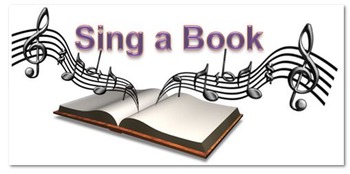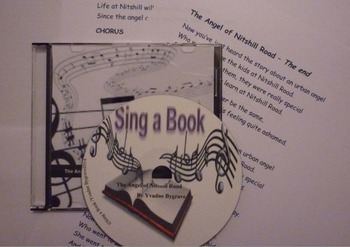Sing a Book: The Angel of Nitshill Road Song by Yvadne Bygrave
Sing a Book
14 Followers
Grade Levels
3rd - 5th
Subjects
Resource Type
Standards
CCSSRL.3.3
CCSSRL.3.5
CCSSRL.3.7
CCSSRL.4.3
CCSSRL.4.5
Formats Included
- Zip
Pages
6 pages
Sing a Book
14 Followers
Description
The two songs are based on the book ‘The Angel of Nitshill Road’ by Anne Fine. ‘The beginning’ introduces Barry Hunter’s victims and how he makes them feel and ‘The End’ concludes the story after the arrival of Celeste (The Angel).
The songs have a traditional piano based melody with lyrics that are easy to learn; portraying the characters thoughts and feelings. They require no musical experience as the bundle includes the vocals, instrumentals and lyrics for each song.
The lesson plan demonstrates how the songs can be used as a guided reading tool, while giving the pupils an opportunity to learn the song within a structured and curriculum-led learning environment.
The songs give pupils a platform to showcase their comprehension of the book and the main characters, through a class assembly or end of term production, while developing their speaking and listening skills.
Ideas are provided to demonstrate how the songs support drama activities. Class performances gives pupils an opportunity to improvise, devise and script drama for one another and a range of audiences, as well as to rehearse, refine, share and respond thoughtfully to drama and theatre performances (National Curriculum in English: primary curriculum).
The songs have a traditional piano based melody with lyrics that are easy to learn; portraying the characters thoughts and feelings. They require no musical experience as the bundle includes the vocals, instrumentals and lyrics for each song.
The lesson plan demonstrates how the songs can be used as a guided reading tool, while giving the pupils an opportunity to learn the song within a structured and curriculum-led learning environment.
The songs give pupils a platform to showcase their comprehension of the book and the main characters, through a class assembly or end of term production, while developing their speaking and listening skills.
Ideas are provided to demonstrate how the songs support drama activities. Class performances gives pupils an opportunity to improvise, devise and script drama for one another and a range of audiences, as well as to rehearse, refine, share and respond thoughtfully to drama and theatre performances (National Curriculum in English: primary curriculum).
Total Pages
6 pages
Answer Key
N/A
Teaching Duration
N/A
Report this resource to TPT
Reported resources will be reviewed by our team. Report this resource to let us know if this resource violates TPT’s content guidelines.
Standards
to see state-specific standards (only available in the US).
CCSSRL.3.3
Describe characters in a story (e.g., their traits, motivations, or feelings) and explain how their actions contribute to the sequence of events.
CCSSRL.3.5
Refer to parts of stories, dramas, and poems when writing or speaking about a text, using terms such as chapter, scene, and stanza; describe how each successive part builds on earlier sections.
CCSSRL.3.7
Explain how specific aspects of a text’s illustrations contribute to what is conveyed by the words in a story (e.g., create mood, emphasize aspects of a character or setting).
CCSSRL.4.3
Describe in depth a character, setting, or event in a story or drama, drawing on specific details in the text (e.g., a character’s thoughts, words, or actions).
CCSSRL.4.5
Explain major differences between poems, drama, and prose, and refer to the structural elements of poems (e.g., verse, rhythm, meter) and drama (e.g., casts of characters, settings, descriptions, dialogue, stage directions) when writing or speaking about a text.





